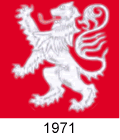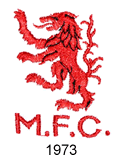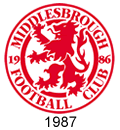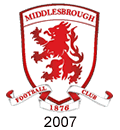Middlesbrough
Middlesbrough was formed at a meeting in the Albert Park Hotel by members of the town's cricket club. The first recorded game took place in 1877, a 1-1 draw with Teeside Wanderers. As professionalism took a grip on the game in the north during the late 1880s, Middlesbrough remained firmly committed to amateurism and as a result, a faction of the club broke away to formMiddlesbrough Ironopolis in 1889. The rivalry between the two clubs was intense: Middlesbrough rejected a proposal from Ironopolis to merge the clubs and themselves turned professional. It was obvious that the town could not support two professional sides and in 1892, Middlesbrough reverted to amateurism. Meanwhile, Ironopolis joined the Football League in 1893 only to resign for financial reasons at the end of the season when the club was wound up.
This left Middlesbrough as the dominant club and they went on to win the Northern League in 1893, 1895 and 1897 as well as the Amateur Cup in 1895 and 1898. The following year, Middlesbrough, now a professional outfit once again, were elected to the Second Division of the Football League. In 1902, "Boro" won promotion to the First Division and a year later moved into Ayrsome Park, which would be the club's home for the next 93 years. In 1905, the club paid out a record £1,000 transfer fee to sign Alf Common. Their best ever League position was achieved in 1914 when the club finished third in Division One.
The club were at best an average First Division side and it was no surprise when they were relegated in 1924. 1927 saw them return as Second Division champions. Relegated again at the end of the season, "Boro" took the Division Two championship again in 1929. The club remained in the First Division without ever really threatening to win anything until 1954, when they began a spell of 12 years. In 1958 the young Brian Clough made his debut for the club and proved a goal-scoring sensation only to have his playing career cut short by injury.
In 1964 Boro' adopted white yokes on their shirts, a reminder of the distinctive "epaulettes" worn between the wars.
In 1966, Middlesbrough dropped into the third Division for the first time in their history, winning promotion back to the Second Division at the first attempt.
 In 1971 a crest appeared on the players' shirts for the first time, consisting of the lion rampant that was the central feature of the town's coat of arms. These were originally those of the Brus family who had substantial holdings after the Norman Conquest in northern England and south-west Scotland and from whom Robert the Bruce (Robert de Brus) was descended.
In 1971 a crest appeared on the players' shirts for the first time, consisting of the lion rampant that was the central feature of the town's coat of arms. These were originally those of the Brus family who had substantial holdings after the Norman Conquest in northern England and south-west Scotland and from whom Robert the Bruce (Robert de Brus) was descended.
In 1973 the club appointed England World Cup hero Jack Charlton as manager and at the end of the 1973-74 season, the club were promoted back to the top level as Second Division Champions. It was Charlton who introduced the distinctive all red kit with a bold white chest band, a style that has been revived several times. The lion crest was modified with the addition of the club's initials and was rendered in red, black or white until it was dropped in 1987.
end of the 1973-74 season, the club were promoted back to the top level as Second Division Champions. It was Charlton who introduced the distinctive all red kit with a bold white chest band, a style that has been revived several times. The lion crest was modified with the addition of the club's initials and was rendered in red, black or white until it was dropped in 1987.
The team made little impression and in 1982, they dropped back into Division Two and then, four years later, facing mounting debts, Middlesbrough dropped into Division Three and went into liquidation. On August 23rd the receivers locked the gates of Ayrsome Park and the club faced expulsion from the League if they failed to fulfil their fixture against Port Vale. The match was played at Hartlepools United's ground and a consortium led by Steve Gibson stepped in to save the club. To mark the rebirth of the club, a new crest was adopted that included the year that the new limited company was formed.
Steve Gibson stepped in to save the club. To mark the rebirth of the club, a new crest was adopted that included the year that the new limited company was formed.
A year later, Middlesbrough were promoted back to Division Two. Even more remarkably, in 1988 they achieved promotion to Division One through the play-offs. Even though they lasted only one season at the top, it was a truly remarkable recovery.
In the early 1990s Middlesbrough were promoted and relegated with bewildering regularity, unable to consolidate at the highest level. In 1995, however, former England captain Bryan Robson took over as manager and the club returned to the Premiership. The club started to make some important international signings including Brazilian Footballer of the Year, Juninho and (a year later) Fabrizio Ravanelli. Together with the completion of their brand new, 30,000 seater Riverside Stadium, Boro had found a sense of ambition. In 1997 they were beaten finalists in both the FA and League Cups, appearing in the League Cup final again the following year. In 2004, at the Millennium Stadium in Cardiff,  Middlesbrough beat Bolton 2-1 to win the League Cup, their first major trophy in 128 years of existence.
Middlesbrough beat Bolton 2-1 to win the League Cup, their first major trophy in 128 years of existence.
For the 2007-08 season, the club introduced a new badge to replace the roundel introduced when the club was reformed in 1986. The central lion rampant motif was retained but now appeared out of a shield with a scroll at the bottom. Significantly the year of the formation club's original formation now appeared.
Following a vote of their supporters, the club announced their intention to return to their white chest band for the 2008-09 season but this talisman could not save them from relegation to the Championship.
